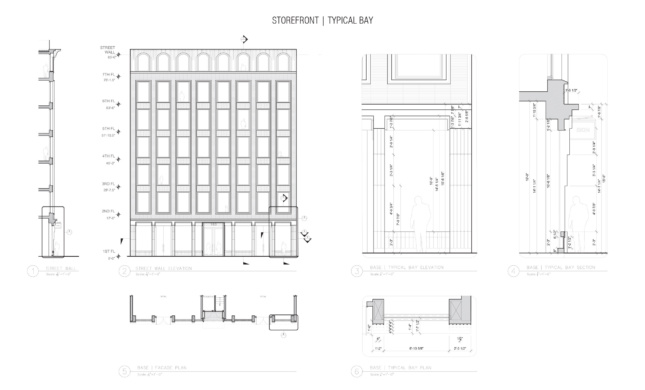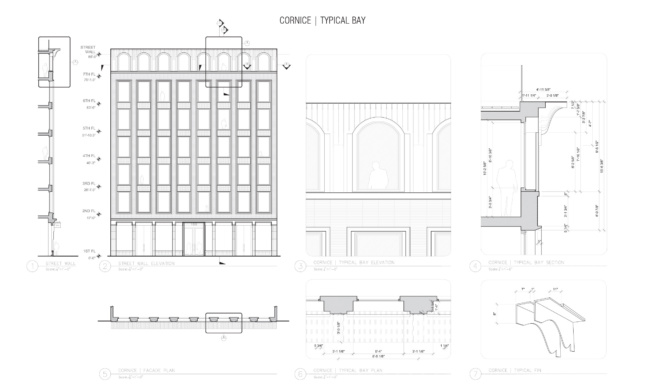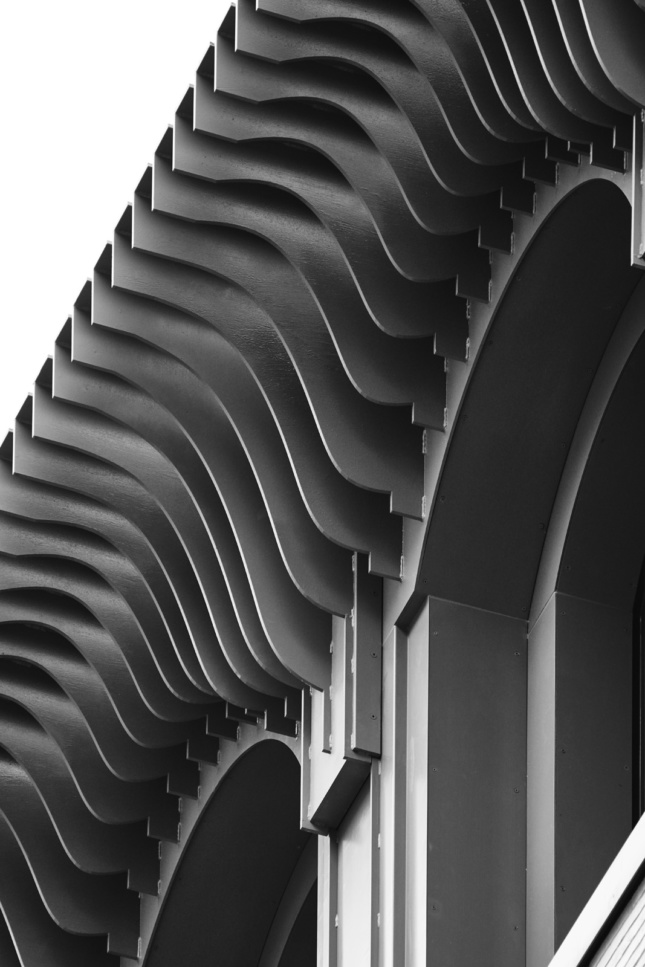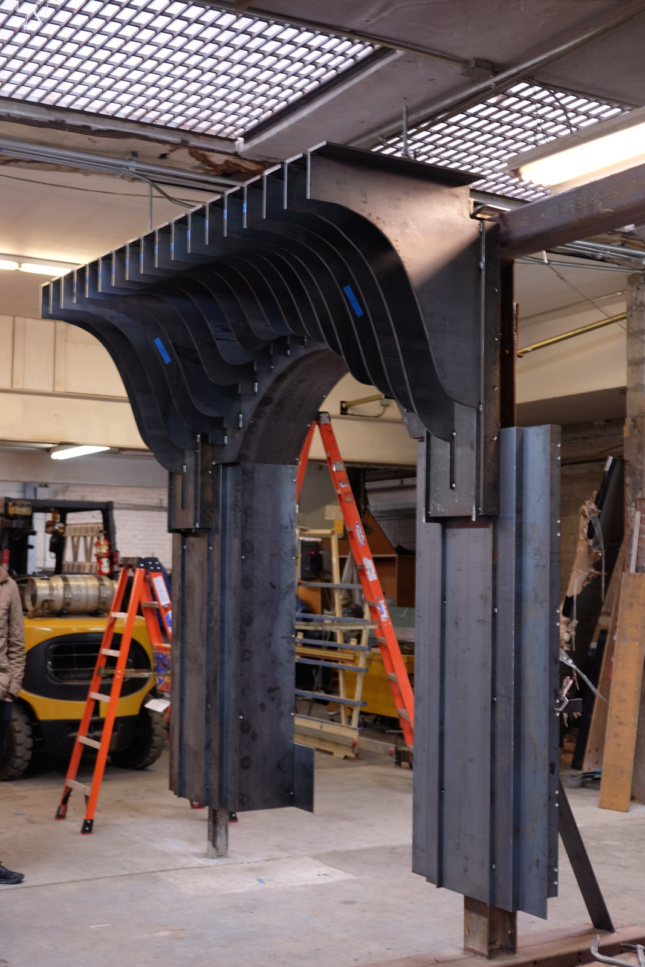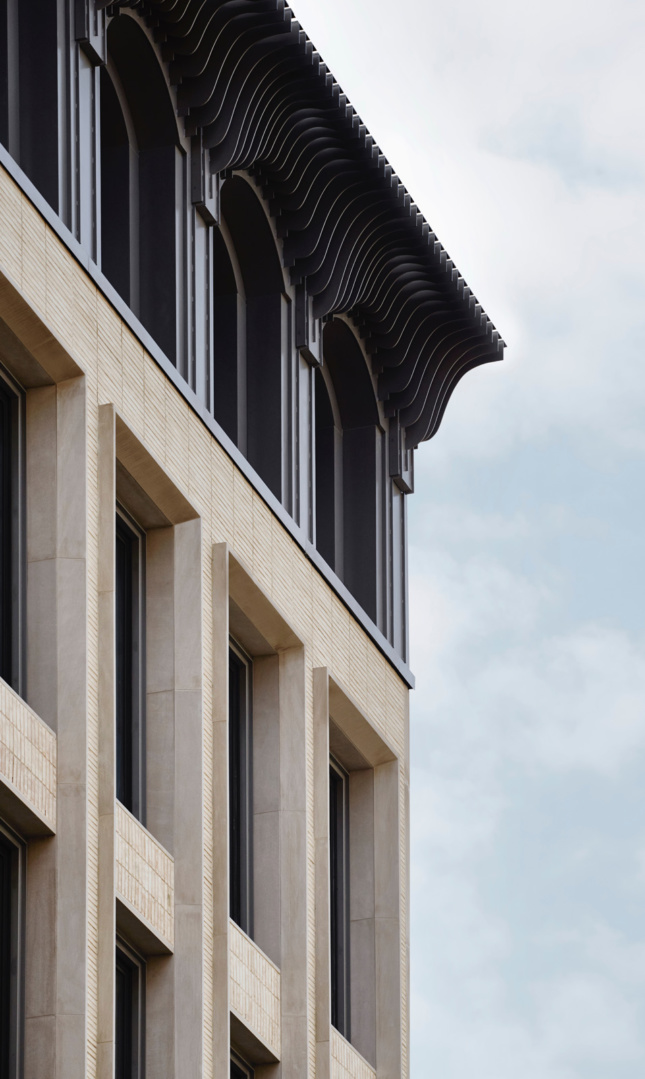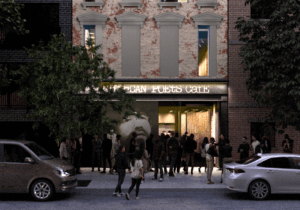Brought to you with support from
Completed this year, 150 Wooster is an eight-story, mixed-use infill project for KUB Capital that offers a contemporary version of Soho loft living in a historic district. HTO Architect worked with the New York City Planning Commission and the Landmarks Preservation Commission to deliver the project, which features a custom-detailed brick facade articulated with limestone and painted steel ornamentation. Daniel Schillberg, managing director of design and architecture at KUB Capital, said this infill project is located on one of the last developable lots in Soho.
“This was one of the last ground-up buildings in Soho and will probably be the last,” he said.

- Facade Manufacturer
Petersen Tegl (brick); Optimum Windows (windows); Diversified Glass and Storefronts INC (cornice fabrication) - Architects
Daniel Schillberg, KUB Capital; HTO Architect (associate architect) - Facade Installer
Structure Tech NY (masonry installer); Adler Windows (window installer); Diversified Glass and Storefronts INC (cornice installation) - Facade Consultants
McNamara – Salvia Structural Engineers (structural consultant) - Location
New York, NY - Date of Completion
2017 - System
reinforced concrete frame with masonry infill - Products
Petersen Tegl “Kolumba” brick; RTS-430 thermally broken steel windows by Optimum; Indiana Limestone
Soho’s predominantly cast iron structures date from 1830s to the 1850s, the surprisingly narrow spectrum of time when the majority of construction occured. The speed of construction in this neighborhood and others like it was achieved by means of prefabrication and a “kit of parts” mentality that was made possible due to advances in cast iron technology that paralleled mass industrialization. KUB said the project was inspired by this context, along with masonry structures that surround site.
Depth of the facade was a key consideration in the design. The facade arranges a large operable window unit measuring over four by eight feet into eight bays, finding a sweet spot between energy code’s permitted window-to-wall ratio, historic compositional proportions, and window manufacturer fabrication limitations. The resulting design, which received unanimous Landmarks approval, was approximately a year-long process.
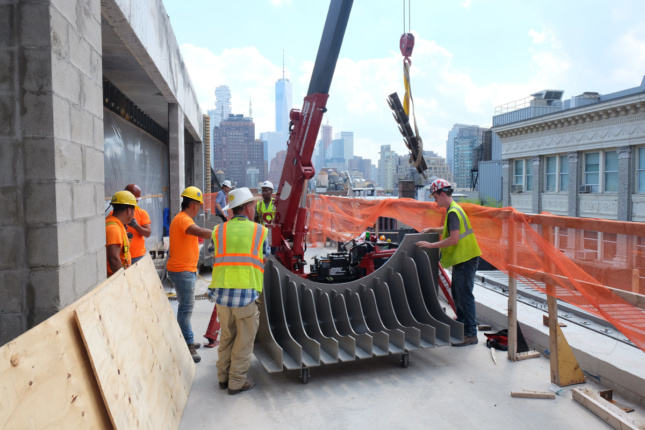
To achieve the desired effect, the architects looked to materials common to the area—brick and limestone—but sought out detailing methods that produce a refined contemporary aesthetic to, in their words, “push the building into our modern times.” This led to the refinement of a limestone trim detail that projects four inches beyond a primary facade of Petersen Tegl Kolumba brick. The masonry veneer is a long and thin proportion arranged in a stack bond with a tight 3/8″ mortar joint to privilege the color of the brick over the mortar color. “These Petersen bricks have a lot of texture. They’re essentially hand made which lead to a lot of ridges and good imperfections,” said Schillberg. Window units are defined by a dark metal frame set 16 inches back from the face of the building, exposing Indiana limestone, which swells to meet the window frame assembly in one precise angular taper.
The masonry installers built a single window bay mockup by looking at the detailing of the spandrel bricks, limestone trim, and the primary facade bricks. One of the constructional challenges was the weight of the limestone trim, which required complex drop beams with specific edge detailing for the concrete superstructure. The limestone, which is pinned back to these moments in the structure of the building, acts as a modified custom brick lintel to support the masonry veneer.
Another key detail of the project is the custom metal work on the storefront and cornice. Both elements were inspired by traditional cast iron detailing involving prefabricated modules of profiled galvanized steel sheets. The cornice essentially functions as a miniature brise-soleil, and is composed of custom-profiled metal fins.
“I loved the idea of having a cornice where, as you approach the building, it evoked the sculptural shaping of a cornice, but as you get underneath it, it actually disappeared into thin elements that allow light through,” Schillberg said.
The brick manufacturer, Petersen Tegl, is a small family-run Danish brickworks company founded more than 200 years ago. Their products are still handmade through a carefully crafted traditional process of hand-pressed, coal-fired production. This produces authentic bricks with a variety of signature light and dark shades. In addition to helping new buildings meld with older and more classic surroundings, Petersen Tegl’s handmade bricks are also helping to revive the idea of the skilled artisan and masonry construction. They’re popular in New York: A developer on Manhattan’s Upper East Side working on the tallest building in the neighborhood north of 72nd Street is utilizing nearly 600,000 Petersen Tegl bricks to connect the structure to its art deco context. Across the river in Brooklyn, two developers have launched luxury condo projects, 145 President and 211 Schermerhorn, each featuring the handcrafted aesthetic of a Petersen Tegl brick facade.












